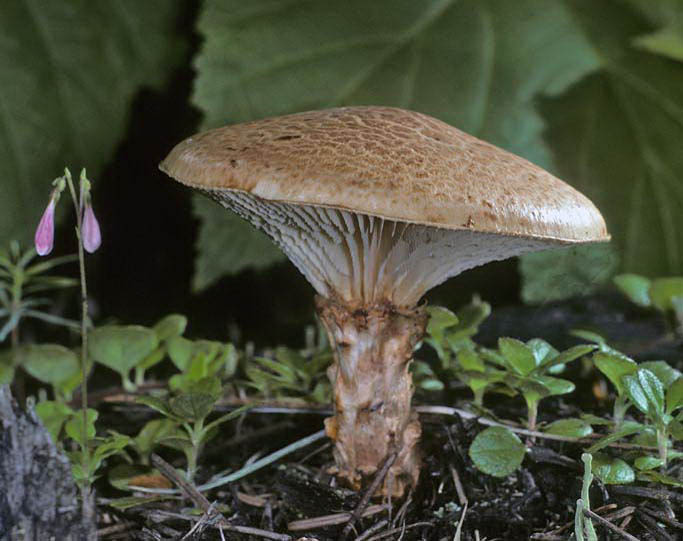
© Kit Scates Barnhart
Danny’s DNA Discoveries – Gloeophyllales of the PNW
by Danny Miller
|
|
Danny’s DNA Discoveries – Gloeophyllales of the PNW
|
|
Introduction
While many pale fleshed polypores are found in the Polyporales, and many rusty brown fleshed polypores are found in the Hymenochaetales, there are a few rusty brown fleshed polypores in this third order. Like the other two orders, gilled mushrooms are found here too, even a "gilled polypore". Of course, every order has crusts in it, and this is no exception. Gloeophyllum s.l. (Gloeophyllum, Osmoporus and Griseopora) - a few dark fleshed polypores, including some with gills. These polypores are differentiated from the Hymenochaetaceae by never having setae, having clamps, and always (not just sometimes) having cylindrical spores. Neolentinus and Heliocybe - gilled mushrooms growing on wood with decurrent gills and serrated gill edges all like Lentinellus, but unlike Lentinellus, Neolentinus might have a more regular, central stem >5 mm thick. Heliocybe has a thin central stem, but it is the very distinctive "sunray" mushroom. Veluticeps s.l. (Veluticeps and Columnocystis) - reflexed crusts with a grey fertile surface on conifers. The Hymenochaetaceae also have similar species but the colours are more rusty brown, tobacco or coffee than grey, and those are capable of being more confluent (each one covering a larger area). abundant common uncommon rare - colour codes match my Pictorial Key and are my opinions and probably reflect my bias of living in W WA. Rare species may be locally common in certain places at certain times. |
 Polypores - Gloeophyllum, Osmoporus and Griseopora - click to expand Polypores - Gloeophyllum, Osmoporus and Griseopora - click to expand
A few dark fleshed polypores, including some with gills. Species mentioned: Gloeophyllum sepiarium, trabeum. Osmoporus odoratus, protractus. Griseopora carbonaria. |
 Gilled mushrooms - Neolentinus and Heliocybe - click to expand Gilled mushrooms - Neolentinus and Heliocybe - click to expand
Gilled mushrooms growing on wood with decurrent gills and serrated gill edges all like Lentinellus, but unlike Lentinellus, Neolentinus might have a more regular, central stem >5 mm thick. Heliocybe has a thin central stem, but it is the very distinctive sunray mushroom. Species mentioned: Neolentinus adhaerens, kauffmanii, lepideus, ponderosus. Heliocybe sulcata. |
 Crusts - Veluticeps and Columnocystis - click to expand Crusts - Veluticeps and Columnocystis - click to expand
Reflexed crusts (half attached to the wood and half bent away) with a grey fertile undersurface found on conifers. Species mentioned: Veluticeps abietina, fimbriata. Columnocystis ambigua. |